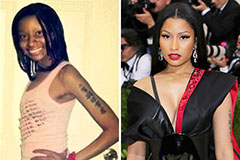Achieving the robust and universal semantic representation for action description remains the key challenge in natural language understanding. Current approaches often struggle to capture the complexity of human actions, leading to imprecise representations. To address this challenge, we propose new framework that leverages multimodal learning techniques to construct detailed semantic representation of actions. Our framework integrates textual information to capture the context surrounding an action. Furthermore, we explore techniques for strengthening the transferability of our semantic representation to unseen action domains.
Through extensive evaluation, we demonstrate that our framework outperforms existing methods in terms of precision. Our results highlight the potential of hybrid representations for progressing a robust and universal semantic representation for action description.
Harnessing Multi-Modal Knowledge for Robust Action Understanding in 4D
Comprehending sophisticated actions within a four-dimensional framework necessitates a synergistic fusion of multi-modal knowledge sources. By integrating visual perceptions derived from videos with contextual indications gleaned from textual descriptions and sensor data, we can construct a more holistic representation of dynamic events. This multi-modal framework empowers our algorithms to discern nuance action patterns, predict future trajectories, and efficiently interpret the intricate interplay between objects and agents in 4D space. Through this unification of knowledge modalities, we aim to achieve a novel level of fidelity in action understanding, paving the way for transformative advancements in robotics, autonomous systems, and human-computer interaction.
RUSA4D: A Framework for Learning Temporal Dependencies in Action Representations
RUSA4D is a novel framework designed to tackle the task of learning temporal dependencies within action representations. This approach leverages a combination of recurrent neural networks and self-attention mechanisms to effectively model the chronological nature of actions. By processing the inherent temporal structure within action sequences, RUSA4D aims to produce more accurate and understandable action representations.
The framework's architecture is particularly suited for tasks that demand an understanding of temporal context, such as activity recognition. By capturing the development of actions over time, RUSA4D can enhance the performance of downstream models in a wide range of domains.
Action Recognition in Spatiotemporal Domains with RUSA4D
Recent developments in deep learning have spurred significant progress in action identification. Specifically, the domain of spatiotemporal action recognition has gained check here traction due to its wide-ranging uses in fields such as video analysis, sports analysis, and human-computer engagement. RUSA4D, a novel 3D convolutional neural network design, has emerged as a powerful tool for action recognition in spatiotemporal domains.
The RUSA4D model's strength lies in its capacity to effectively capture both spatial and temporal relationships within video sequences. Utilizing a combination of 3D convolutions, residual connections, and attention strategies, RUSA4D achieves state-of-the-art results on various action recognition benchmarks.
Scaling RUSA4D: Efficient Action Representation for Large Datasets
RUSA4D proposes a novel approach to action representation for large-scale datasets. This method leverages a hierarchical structure comprising transformer layers, enabling it to capture complex relationships between actions and achieve state-of-the-art performance. The scalability of RUSA4D is demonstrated through its ability to effectively handle datasets of unprecedented size, surpassing existing methods in multiple action recognition benchmarks. By employing a adaptable design, RUSA4D can be easily customized to specific scenarios, making it a versatile resource for researchers and practitioners in the field of action recognition.
Evaluating RUSA4D: Benchmarking Action Recognition across Diverse Scenarios
Recent progresses in action recognition have yielded impressive results on standardized benchmarks. However, these datasets often lack the breadth to fully capture the complexities of real-world scenarios. The RUSA4D dataset aims to address this challenge by providing a comprehensive collection of action instances captured across diverse environments and camera perspectives. This article delves into the assessment of RUSA4D, benchmarking popular action recognition algorithms on this novel dataset to determine their effectiveness across a wider range of conditions. By comparing results on RUSA4D to existing benchmarks, we aim to provide valuable insights into the current state-of-the-art and highlight areas for future investigation.
- The authors propose a new benchmark dataset called RUSA4D, which encompasses a wide variety of action categories.
- Additionally, they evaluate state-of-the-art action recognition models on this dataset and compare their outcomes.
- The findings reveal the difficulties of existing methods in handling diverse action understanding scenarios.
 Yasmine Bleeth Then & Now!
Yasmine Bleeth Then & Now! Jenna Jameson Then & Now!
Jenna Jameson Then & Now! Danny Pintauro Then & Now!
Danny Pintauro Then & Now! Earvin Johnson III Then & Now!
Earvin Johnson III Then & Now! Nicki Minaj Then & Now!
Nicki Minaj Then & Now!